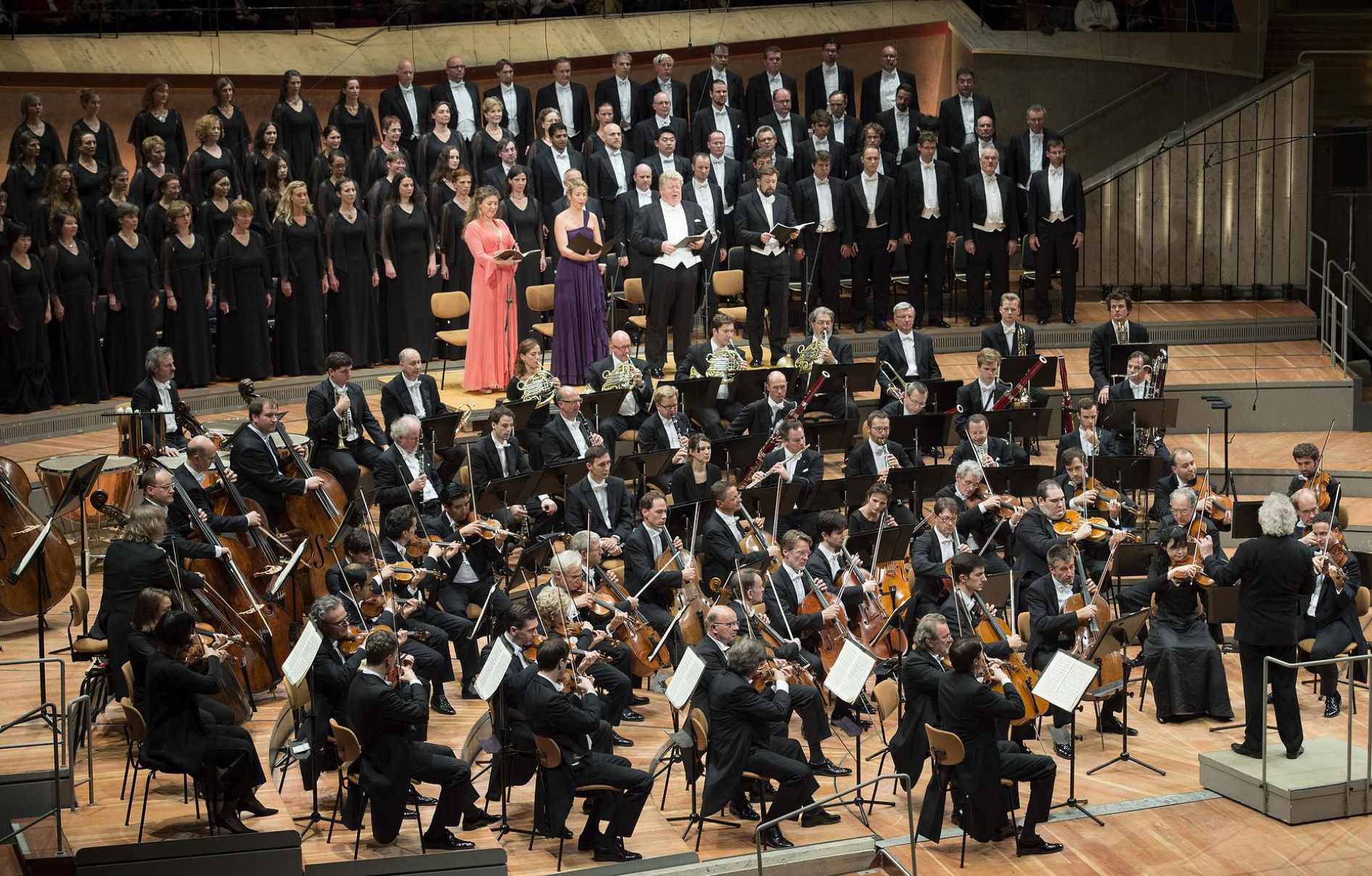Home>Genres>Rock>What Is The Difference Between Rock Music And Heavy Metal


Rock
What Is The Difference Between Rock Music And Heavy Metal
Modified: January 22, 2024
Learn about the contrast between rock music and heavy metal, exploring the unique characteristics and influences that set them apart. Discover the diverse sounds and subgenres within rock.
(Many of the links in this article redirect to a specific reviewed product. Your purchase of these products through affiliate links helps to generate commission for AudioLover.com, at no extra cost. Learn more)
Table of Contents
Introduction
Rock music and heavy metal are two genres that have left an indelible mark on the music industry. These genres, although closely related, have distinct characteristics that set them apart. While both forms of music have their roots in the rebellious nature of youth, they offer different experiences to listeners.
Rock music emerged in the 1950s as a fusion of various styles, including rhythm and blues, country, and gospel. It became the voice of a generation longing for change and self-expression. With its catchy melodies, driving rhythms, and relatable lyrics, rock soon took over the airwaves and captivated audiences around the world.
On the other hand, heavy metal emerged in the late 1960s and early 1970s as a more aggressive and intense form of rock. Characterized by its distorted guitar riffs, powerful drumming, and often dark and rebellious lyrics, heavy metal represented a departure from the mainstream. It was seen as a form of musical rebellion against societal norms and a channel for pent-up frustration and alienation.
While both rock music and heavy metal share a common rebellious spirit, they have evolved separately over the years, giving rise to different subgenres and styles. Rock encompasses a wide range of sounds, from the classic rock of the 60s and 70s to the alternative and indie rock of the 90s and beyond. Heavy metal, on the other hand, encompasses subgenres such as thrash metal, death metal, and black metal, each with its own distinct characteristics.
In this article, we will explore and compare the musical characteristics, instruments used, vocal styles, lyrics and themes, subgenres, cultural significance, and fanbase of rock music and heavy metal. By delving into these aspects, we hope to shed light on the unique qualities and contributions of each genre.
Musical Characteristics
When it comes to musical characteristics, both rock music and heavy metal share some similarities, but also have distinct differences. Rock music typically features a strong emphasis on melody, with catchy hooks and memorable choruses. It often incorporates elements of blues and folk music, with a focus on storytelling and emotional expression.
Heavy metal, on the other hand, is characterized by its heavy and aggressive sound. It is characterized by its use of distorted guitars, thunderous drums, and powerful basslines. The guitar solos in heavy metal are often intricate and fast-paced, showcasing the technical prowess of the musicians. The tempo in heavy metal is usually faster and more intense than in rock music.
Another difference between rock music and heavy metal is the use of instrumentation. While both genres utilize guitars, bass, drums, and vocals, heavy metal often incorporates additional instruments, such as keyboards and synthesizers, to create a more atmospheric and epic sound. The use of double bass drums and intricate drum fills is also more prevalent in heavy metal.
Vocally, rock music tends to have a broader range, with singers often displaying melodic and versatile voices. The lyrics in rock songs often focus on love, relationships, and personal experiences. In contrast, heavy metal vocals tend to be more aggressive and powerful, with singers often employing techniques such as screaming and growling. The lyrics in heavy metal songs can cover a wide range of topics, including social and political issues, fantasy and mythology, and personal struggles.
Both rock music and heavy metal incorporate the use of dynamics, with softer verses and more explosive choruses. The use of guitar solos is also prevalent in both genres, although heavy metal guitar solos often showcase more technical skill and speed.
In summary, while rock music and heavy metal share some musical characteristics, such as a focus on guitar-driven music and powerful vocals, heavy metal tends to be more aggressive and intense, with faster tempos and heavier instrumentation. Rock music, on the other hand, often emphasizes melody and storytelling, with a wider range of vocal styles and lyrical content.
Musical Instruments Used
Both rock music and heavy metal rely on a similar set of musical instruments, although there are some variations and additional instruments used in heavy metal. The core instruments used in both genres include electric guitars, bass guitars, drums, and vocals.
Electric guitars play a prominent role in both rock music and heavy metal. The distinctive sound of an electric guitar, with its amplified and often distorted tones, is essential to the characteristic sound of both genres. Guitarists in rock music and heavy metal often use techniques such as power chords, palm muting, and guitar solos to add texture and intensity to their music.
Bass guitars provide the low-end foundation and groove in both rock music and heavy metal. Bassists in these genres play intricate basslines that complement the guitar parts and contribute to the overall rhythmic drive of the music.
Drums are another essential instrument in both rock music and heavy metal. Drummers in these genres drive the rhythm, using a combination of various drumming techniques and patterns to create the backbone of the music. In heavy metal, drummers often employ double bass drumming, blast beats, and complex fills to enhance the intensity and speed of the music.
Vocals are a significant aspect of both rock music and heavy metal. Rock singers typically have a more melodic and versatile vocal style, ranging from soft and emotive to powerful and gritty. In contrast, heavy metal vocalists often employ more aggressive and powerful techniques, such as screaming or growling, to match the intensity of the instrumental accompaniment.
In addition to these core instruments, heavy metal often incorporates additional instruments to create a more expansive and atmospheric sound. Keyboards and synthesizers are commonly used in certain subgenres of heavy metal to add atmospheric layers and create a sense of grandeur. Other occasional instruments in heavy metal include orchestral elements like string sections or choirs.
Overall, the musical instruments used in both rock music and heavy metal are similar, with electric guitars, bass guitars, drums, and vocals being the foundation. However, heavy metal expands on this foundation by incorporating additional instruments, especially keyboards and synthesizers, to create a more expansive and epic sound.
Vocal Style
The vocal style in both rock music and heavy metal plays a crucial role in defining the overall sound and impact of the genres. While some vocal techniques may overlap, there are distinct differences in the vocal styles between the two.
In rock music, vocal styles can vary widely depending on the subgenre or specific artist. Rock singers often focus on delivering emotive and melodic vocals that showcase their singing abilities. They may utilize techniques such as vibrato, falsetto, and dynamic range to add depth and emotion to their performances. The emphasis in rock music is on clarity and expression, allowing the lyrics and melodies to be clearly understood and appreciated by the listeners.
In contrast, heavy metal has a more aggressive and intense vocal style. Heavy metal vocalists often employ powerful and forceful techniques such as screaming, growling, or harsh shouting. These techniques help to convey the raw energy and emotional intensity that are characteristic of the genre. The vocals in heavy metal are often more raspy and distorted, serving as an instrument in their own right and contributing to the overall heaviness and intensity of the music.
Within the world of heavy metal, there are various vocal substyles that reflect different approaches and techniques. For example, in thrash metal, vocalists may adopt a rapid-fire, aggressive style that matches the rapid tempo and aggressive nature of the music. In contrast, in subgenres like power metal, vocalists tend to have a more operatic and soaring style, emphasizing high-pitched and melodic vocals that complement the grandiosity of the music.
It is important to note that some artists and bands in both rock and heavy metal may experiment with different vocal styles, incorporating elements from various genres or creating their unique blend. This versatility and willingness to explore different vocal approaches contribute to the diversity within the genres.
Overall, while rock music features melodic and expressive vocals, heavy metal leans towards aggressive and intense vocal styles. Both styles have their unique charms and appeal, attracting a wide range of listeners who appreciate the emotional depth and power conveyed through the vocals.
Lyrics and Themes
The lyrics and themes explored in rock music and heavy metal can vary significantly, reflecting the different ideologies and emotions associated with each genre.
Rock music has a wide range of lyrical content, covering various themes such as love, relationships, personal experiences, and social commentary. Many rock songs revolve around the universal experiences of love, heartbreak, and self-discovery. Artists often use poetic and metaphorical language to convey their emotions and tell stories. Rock lyrics can be introspective and introspective, exploring the complexities of human emotions and the challenges of navigating relationships.
In contrast, heavy metal lyrics often delve into darker and more provocative themes. Heavy metal has gained a reputation for exploring taboo topics such as death, occultism, horror, and fantasy. Some subgenres, like doom metal and black metal, employ bleak and cryptic imagery to convey a sense of darkness and despair. Heavy metal lyrics may explore societal issues, challenge authority, or serve as an outlet for personal struggles and frustrations. Additionally, heavy metal often draws inspiration from mythology, folklore, and epic storytelling, creating a sense of escapism and wonder.
Both rock music and heavy metal can touch upon social and political issues. Rock music, for example, has been a vehicle for protest and social activism, with many songs addressing topics such as war, inequality, and injustice. Artists use their platform to shed light on societal issues and inspire change. Heavy metal, too, tackles social and political themes but often adds a more confrontational and subversive approach, questioning authority and challenging the status quo.
It is important to note that not all rock music or heavy metal songs adhere strictly to these themes. Both genres have diverse artists and bands that explore a wide range of lyrical topics, allowing for personal expression and experimentation.
In summary, rock music encompasses lyrics that explore the complexities of love, relationships, personal experiences, and social commentary, while heavy metal delves into darker themes such as death, occultism, fantasy, and societal issues. Both genres provide a platform for artists to express themselves creatively and connect with listeners through their evocative and thought-provoking lyrics.
Subgenres
Rock music and heavy metal have given rise to a multitude of subgenres, each with its own unique characteristics and fanbase. These subgenres represent different stylistic variations and elements within the broader genres.
Rock music has seen the emergence of various subgenres throughout its history. From the classic rock of the 60s and 70s, which featured iconic bands like The Beatles and Led Zeppelin, to the alternative rock of the 90s, pioneered by bands like Nirvana and Pearl Jam. Other subgenres include punk rock, with its raw and rebellious energy, and progressive rock, which incorporates complex musical structures and unconventional instrumentation.
Heavy metal, however, has a higher number of subgenres due to its diverse and evolving nature. Some of the most well-known subgenres include thrash metal, characterized by its fast and aggressive riffs and lyrics often addressing social and political issues. There is also death metal, with its guttural vocal style and dark subject matter, and black metal, known for its atmospheric and often occult-inspired sound.
Other subgenres within heavy metal include power metal, which combines elements of classical music with soaring vocals and epic storytelling, and doom metal, which embraces a slower, sludgier sound and explores themes of despair and melancholy. Additionally, subgenres like progressive metal, symphonic metal, and nu metal showcase further experimentation and fusion of different musical styles.
These subgenres provide a platform for artists and bands to explore their unique musical vision and connect with specific audiences who resonate with a particular sound or theme. They contribute to the overall diversity and richness of rock music and heavy metal as genres.
Furthermore, the emergence of subgenres has also opened the doors to more niche and underground scenes, allowing smaller bands and artists to find their own loyal following within specific subgenres. This diversity within the genres ensures that fans can explore and discover new music that suits their personal tastes.
In summary, both rock music and heavy metal have given birth to numerous subgenres, each with its own distinct characteristics, styles, and themes. These subgenres provide a platform for artists to push boundaries and explore new musical territories, offering listeners a vast array of options to find music that resonates with them.
Cultural Significance
Rock music and heavy metal have had a profound cultural impact, influencing not only the music industry but also various aspects of society. Both genres have become symbols of rebellion, self-expression, and a sense of belonging for their respective fanbases.
Rock music emerged as a cultural force in the 1950s and 1960s, providing a voice for the counterculture movement and reflecting the changing social and political landscape of the time. It became an outlet for youth to express their frustrations, desires, and dreams. Rock music helped shape the identity of the baby boomer generation, challenging societal norms and promoting ideas of peace, love, and freedom.
Heavy metal, born out of rock music in the late 1960s and early 1970s, took the rebellious spirit even further. It provided an outlet for fans to release their anger, frustration, and alienation. Heavy metal became a symbol of individualism and non-conformity, attracting a dedicated fanbase who felt a sense of camaraderie and belonging within the metal community. The intense and powerful nature of the music resonated with fans who found solace in its cathartic energy.
Moreover, both rock music and heavy metal have played a significant role in shaping fashion, style, and visual aesthetics. Rock icons like Elvis Presley, Jimi Hendrix, and The Rolling Stones influenced not only the music scene but also fashion trends. From the rebellious attire of leather jackets and torn jeans to the flamboyant costumes and wild hairstyles, rock music and heavy metal have had a lasting impact on fashion and self-expression.
The cultural impact of these genres extends beyond just music and fashion. Rock music and heavy metal have also had a profound influence on art, literature, film, and popular culture. The album artwork, stage shows, and music videos associated with these genres often incorporate provocative and visually striking imagery that captures the essence and spirit of the music.
Furthermore, the cultural significance of rock music and heavy metal can also be seen in the way they have shaped and influenced subsequent generations of musicians. Artists across various genres, from pop to hip hop, have drawn inspiration from rock and metal, incorporating elements of their sound and style into their own music. This cross-pollination of genres has led to the creation of innovative and exciting music that pushes boundaries and breaks stereotypes.
In summary, rock music and heavy metal have had a lasting cultural significance. They have provided a platform for self-expression, a sense of community, and have influenced fashion, visual aesthetics, and other forms of art. Their impact on society extends far beyond the realm of music, shaping the cultural landscape and inspiring subsequent generations of artists and musicians.
Fanbase and Popularity
The fanbases of rock music and heavy metal are dedicated and diverse, spanning across generations and continents. While rock music has enjoyed widespread popularity since its inception, heavy metal has developed a strong and loyal following that has remained dedicated over the years.
The fanbase of rock music encompasses a wide demographic, ranging from older listeners who grew up with the classic rock bands of the 60s and 70s to younger generations who have embraced the alternative and indie rock movements. Rock music has had a lasting impact and continues to attract new fans with its timeless appeal and ability to evolve with the times.
Heavy metal, on the other hand, has a more niche and dedicated fanbase. Metal fans have a strong sense of community and often identify themselves as part of the metal subculture. The fanbase spans across different age groups and is recognized for its passion and loyalty. Metal fans are known to support their favorite bands through attending concerts, purchasing albums, and engaging in online communities.
Both rock music and heavy metal have enjoyed significant popularity and commercial success over the years. Rock bands like The Beatles, Led Zeppelin, and The Rolling Stones achieved immense fame and success, becoming household names and influencing generations of musicians. Heavy metal bands like Black Sabbath, Iron Maiden, and Metallica also achieved global success, with millions of albums sold and sold-out arena shows.
Furthermore, rock music and heavy metal have continued to find new audiences and maintain their popularity through the years. Many iconic bands from both genres continue to perform and draw large crowds at live concerts and festivals. Additionally, new bands and artists in these genres continue to emerge, keeping the spirit of rock music and heavy metal alive and attracting young fans.
The popularity of rock music and heavy metal can also be seen in their influence on pop culture. From movies and television shows to commercials and video games, these genres have left a lasting impact on various forms of media. The iconic imagery and sound associated with rock and metal have become synonymous with rebellion, energy, and attitude.
In the digital age, the fanbases of both rock music and heavy metal have found ways to connect and engage through online platforms and social media. Fan communities, forums, and streaming services allow fans to discover new music, engage in discussions, and support their favorite artists.
In summary, rock music and heavy metal have dedicated and diverse fanbases that have contributed to the continued popularity of these genres. These fanbases span across generations and have a strong sense of loyalty and community. Through the years, both genres have maintained their relevance and continued to attract new fans, ensuring their place in the music industry and popular culture.
Evolution and Influences
Rock music and heavy metal have undergone significant evolution and have been influenced by various genres and artists throughout their histories. These influences have shaped the sound, style, and direction of both genres, contributing to their diverse and ever-evolving nature.
Rock music evolved from the fusion of different styles, including rhythm and blues, country, and gospel. In the 1950s and 1960s, rock pioneers like Elvis Presley, Chuck Berry, and Little Richard introduced a new sound that blended elements of these genres with a youthful energy and rebellious spirit. Over the years, rock music embraced different subgenres and experimented with new sounds, incorporating influences from folk, psychedelic, punk, and alternative music.
Similarly, heavy metal has been influenced by various genres, contributing to its distinct and powerful sound. The roots of heavy metal can be traced back to the blues-based rock of bands like Led Zeppelin and Black Sabbath. These bands incorporated heavy guitar riffs, dark lyrical themes, and a heavier overall sound that laid the foundation for the genre. As heavy metal evolved, bands began incorporating elements of classical music, progressive rock, and even jazz, resulting in subgenres like progressive metal and fusion metal.
Furthermore, both rock music and heavy metal have been influenced by cultural and societal changes. In the 1960s, rock music became a vehicle for expressing countercultural and anti-establishment sentiments, reflecting the social and political turmoil of the era. The punk movement of the 1970s brought a raw, rebellious, and do-it-yourself ethos to rock music, challenging the established norms. Heavy metal, with its aggressive sound and rebellious attitude, emerged as a response to a changing society and acts as an outlet for frustrations and alienation.
Other genres, such as blues, jazz, and even classical music, have influenced rock music and heavy metal in terms of musical techniques and structures. The blues provided the foundation for rock guitar playing, with its emphasis on riffs, bending notes, and improvisation. Jazz influences can also be heard in the complex instrumentation and improvisational aspects of some rock and metal songs. Classical music has been a source of inspiration for many progressive rock and symphonic metal bands, with its intricate arrangements and symphonic elements.
Moreover, the evolution of technology has also influenced the sound of both genres. The advent of electric instruments, amplification, and recording techniques allowed for new sonic possibilities and experimentation. The use of distortion, effects pedals, and studio effects has become integral to the distinct sounds of rock and heavy metal.
In summary, rock music and heavy metal have evolved and been influenced by a wide range of genres, cultural movements, and technological advancements. These influences have shaped the sound, style, and direction of both genres, allowing for continuous innovation and experimentation. As a result, rock music and heavy metal remain vibrant and dynamic genres that continue to evolve and captivate audiences around the world.
Conclusion
In conclusion, rock music and heavy metal are two genres that have made a lasting impact on the music industry and popular culture. While they share common roots, they have evolved separately, each with its own distinctive characteristics and fanbases.
Rock music, with its catchy melodies, relatable lyrics, and diverse subgenres, has captured the hearts of listeners across different generations. From the early days of rock ‘n’ roll to the alternative and indie rock movements, this genre has provided a medium for self-expression and a reflection of society’s changing attitudes and values.
Heavy metal, on the other hand, pushes the boundaries of intensity and aggression. With its powerful guitar riffs, thunderous drums, and often dark lyrics, heavy metal has attracted a dedicated and loyal fanbase. The genre has spawned various subgenres, each with its own identity and approach, offering a wide range of sounds and themes for listeners to explore.
Both rock music and heavy metal have cultural significance that extends beyond just music. They have influenced fashion, art, and popular culture, shaping the visual aesthetics and attitudes of their respective subcultures. These genres have provided a platform for self-expression, rebellion, and a sense of belonging for fans around the world.
The evolution of rock music and heavy metal has been influenced by various genres and societal changes. From the blues-based rock of the past to the incorporation of classical and progressive elements, these genres have embraced different influences, resulting in a rich and diverse musical landscape.
In the digital age, rock music and heavy metal continue to thrive, with dedicated fanbases connecting and engaging through online platforms and social media. The genres remain popular, attracting new listeners and inspiring successive generations of musicians.
In the end, whether you find solace in the melodic and relatable sounds of rock music or seek catharsis in the intense and rebellious energy of heavy metal, both genres offer a gateway to a world of powerful emotions, stories, and self-discovery.
So, let the power chords ring out, the drums thunder, and the vocals soar. Rock music and heavy metal will continue to captivate and inspire, carrying the torch of rebellion, self-expression, and passion for years to come.











